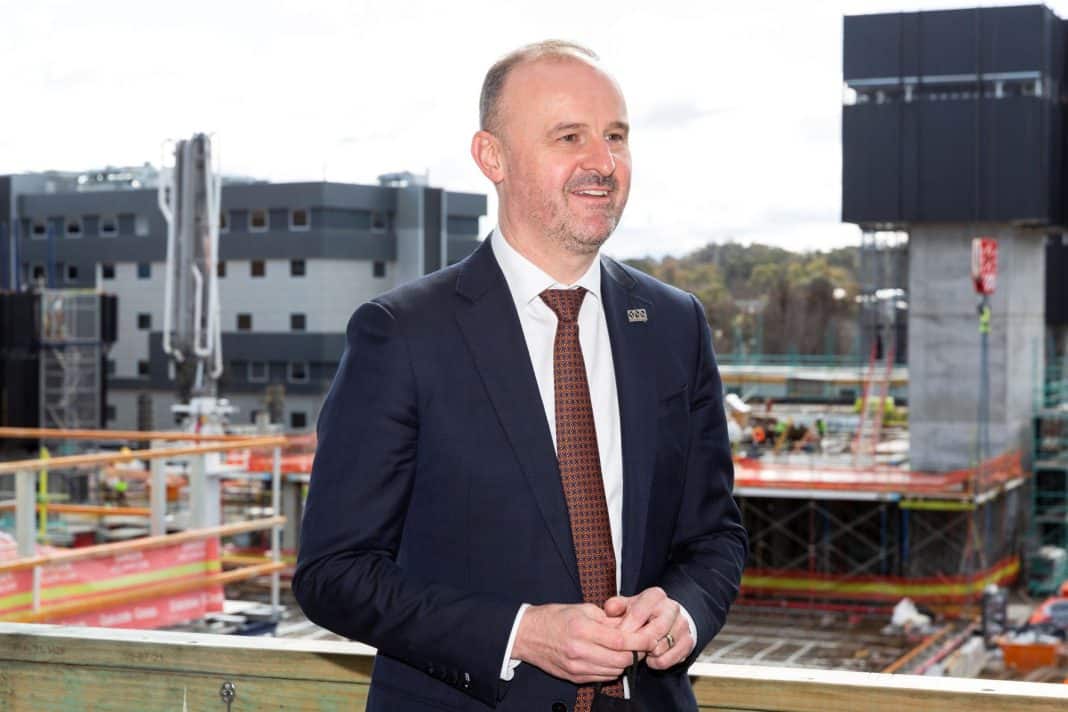Tomorrow’s ACT Budget contains a $7 billion five-year infrastructure program, but the ACT will also decrease its infrastructure spending.
In the 2021–22 Budget, the ACT embarked on the largest infrastructure program in the public sector’s history: a $5 billion pipeline of local infrastructure projects over five years to support more than 15,300 construction jobs, part of the government’s plan to have more than 250,000 jobs in the local economy by 2025.
Over the next two years, Chief Minister Andrew Barr announced today, the ACT Government will step down from its emergency stimulatory level infrastructure spending (more than a billion dollars a year) to a more normal level of infrastructure spending ($700 to $800 million a year).
Mr Barr said he believed emergency stimulatory expenditure would no longer be needed, while the availability of supplies, materials, and skilled labor were “challenges” to delivering infrastructure.
- ‘Full throttle’: Turbo-charged Budget will get Canberra’s economy moving again (6 October 2021)
- ACT Budget: Largest-ever infrastructure program (5 October 2021)
“Across all infrastructure delivery around Australia in all of the states and territories, we were all very clearly told at the beginning of the pandemic that we needed to use the record low interest rates and the spare capacity that there was at that time across the infrastructure sector to bring forward infrastructure projects,” Mr Barr said.
“We have done exactly that – but as we transition out of the COVID emergency, particularly the economic emergency, it is time to begin to normalise our infrastructure projects.”
The two major strands of infrastructure spending in this year’s ACT Budget are in health and housing, he said.
- ACT budget to focus on health, housing (31 July)
The government will spend more than $820 million on health infrastructure. This includes almost $91 million in new funding at the Canberra Hospital campus, for a 64-bed inpatient unit, a new Pathology building, a new inpatient building, a palliative care ward, demolishing a building, upgrading public wayfares, and planning the next phases of the Master Plan.
New clinical equipment will also be purchased, including a nuclear medicine gamma camera, a nuclear medicine SPECT/CT, a medical-linear accelerator, and PET and CT scanners. A southside hydrotherapy pool will be built at the Tuggeranong Lakeside Leisure Centre.
The government plans to make a record amount of land available to tackle housing affordability, and to build 30,000 dwellings in the next five years.
The five-year infrastructure program includes the Canberra Hospital expansion, the CIT campus at Woden, extending light rail south, constructing the new Canberra Theatre, new schools, and more suburban infrastructure, Mr Barr said.
- Arts capital or halls for hire? Drama over government’s new arts policy (29 July)
- Light rail stage 2A business case will not be revised (8 June)
- ACT Government signs contract for Woden CIT campus (26 May)
- Crane begins construction at Canberra Hospital (8 March)
He said those infrastructure commitments were outlined in 2019, and will now be delivered.
Beyond this Budget, the government will consider projects such as a new football stadium at the AIS, convention facilities, sports arenas, northside hospital facilities, and new and revamped schools.
The government will work with the Commonwealth to electrify everything. Phasing out fossil fuel vehicles and replacing them with electrical vehicles was announced last month; the government has further plans for the gas transition, the Big Canberra Battery, and the Sustainable Household Scheme.
- Zero emission vehicles will be ‘easier and cheaper to access’, ACT Government says (20 July)
- ACT to phase out fossil fuel-powered vehicles by 2035 (18 July)
“All elements that comprise a broader agenda: halfway to net zero emissions by 2045,” Mr Barr said.
“At the heart of all of that is a very simple proposition. Over the next several decades, we will need to electrify everything. That’s the journey that we are on, and we will continue that step by step over the coming decades.”
Get local, national and world news, plus sport, entertainment, lifestyle, competitions and more delivered straight to your inbox with the Canberra Daily Daily Newsletter. Sign up here.



